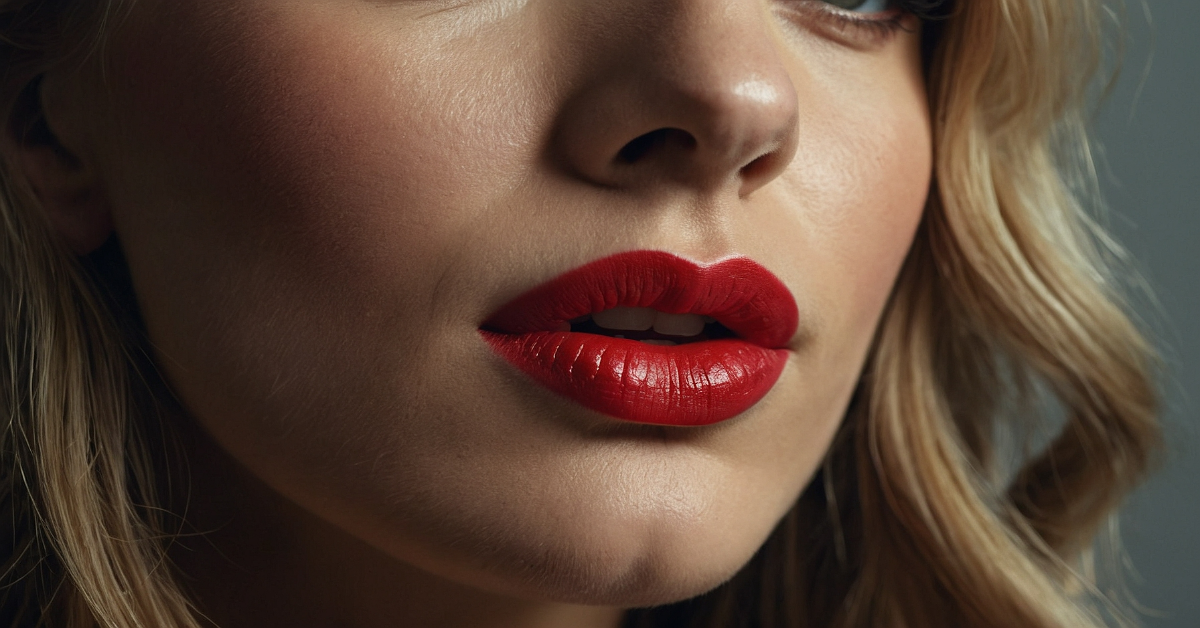Why Do My Gel Nails Peel Off

Why Do Gel Nails Peel Off?
Uncovering the Causes: Why Gel Nails Peel Off
Gel nail polish has become increasingly popular in recent years, offering a long-lasting and glossy finish that many people find appealing. However, one common issue that gel nail wearers often face is the peeling or lifting of the polish. This can be frustrating and can lead to a premature need for nail maintenance or removal. Understanding the underlying causes of gel nail peeling can help you take steps to prevent this issue and enjoy your manicure for longer.
Improper Application Technique
One of the primary reasons why gel nails may peel off is improper application technique. Gel nails require a specific multi-step process that includes dehydrating the nails, applying a base coat, curing the gel, and sealing it with a top coat. If any of these steps are skipped or not done correctly, it can result in poor adhesion and the eventual peeling of the gel polish.
For example, if the nails are not properly dehydrated before the gel application, the polish may not bond effectively to the nail surface. Additionally, if the gel is not cured completely under the UV or LED light, it can lead to a weakened bond and premature peeling.
Nail Preparation Issues
Another factor that can contribute to gel nail peeling is inadequate nail preparation. Before applying gel polish, the natural nails should be filed, buffed, and dehydrated to create a smooth, even surface for the gel to adhere to. If this step is rushed or skipped, the gel may not grip the nail as securely, leading to peeling.
It's also important to ensure that the nails are free of any oils, lotions, or residues that could interfere with the gel's adhesion. Failure to properly prepare the nails can result in the gel lifting prematurely.
Excessive Wear and Tear
Gel nails are designed to be long-lasting, but they are not indestructible. Over time, the constant wear and tear on the nails can cause the gel to start peeling or lifting. Activities such as frequent handwashing, contact with water, and even typing can all contribute to the gradual breakdown of the gel polish.
To help extend the wear time of your gel manicure, it's important to be mindful of your daily activities and take steps to protect your nails, such as wearing gloves when doing household chores or when necessary.
Nail Growth and Lifting
As your nails grow out, the gel polish at the base of the nail can start to lift, leading to peeling. This is a natural consequence of nail growth and is not necessarily a sign of a problem with the application or the gel itself.
To help mitigate this issue, consider scheduling regular touch-up appointments or removing the gel polish and reapplying it every few weeks, depending on the rate of your nail growth.
Gel Removal Techniques
Improper removal of gel nails can also contribute to peeling. When gel polish is removed incorrectly, such as by aggressively filing or peeling it off, it can damage the natural nail and leave it more susceptible to peeling in the future.
To avoid this, it's best to have your gel nails removed by a professional, who can use the proper techniques to gently remove the polish without causing harm to your nails.
Environmental Factors
Environmental factors such as temperature and humidity can also play a role in the peeling of gel nails. Extreme hot or cold temperatures, as well as exposure to excessive moisture, can cause the gel to expand and contract, leading to a weakened bond and eventual peeling.
To help combat this, consider using a gel polish that is specifically formulated to withstand environmental stresses, and be mindful of the conditions your nails are exposed to during the wear time.
By understanding the various factors that can contribute to gel nail peeling, you can take proactive steps to minimize the issue and enjoy a long-lasting, chip-resistant manicure. Regular maintenance, proper nail preparation, and careful attention to your daily habits can all help ensure that your gel nails stay securely in place.
Understanding the Causes of Gel Nail Peeling
Unraveling the Mystery: Why Do Gel Nails Peel Off?
Gel nails have become a popular choice for many people seeking a long-lasting, glossy manicure. However, one common issue that many gel nail wearers face is the premature peeling of their nails. Wondering why this happens? Let's dive into the underlying causes and explore effective solutions to prevent this frustrating problem.
Improper Nail Preparation
One of the primary reasons for gel nail peeling is improper nail preparation before the application. If the nails are not thoroughly cleaned, dehydrated, and roughened, the gel polish may not adhere properly to the nail surface. This can lead to the gel lifting and peeling off prematurely. Ensure that your nails are free of any oil, lotion, or residue before the gel application, and lightly buff the nail surface to create a rough texture for better adhesion.
Excessive Filing or Buffing
While proper nail preparation is crucial, overaggressive filing or buffing can also contribute to gel nail peeling. When the nail surface is excessively filed or buffed, it can thin out the nail plate, making it more susceptible to lifting and peeling. During the application process, be gentle and avoid over-filing the nails, as this can compromise the integrity of the nail bed.
Improper Curing Time
The curing process is essential for the longevity of gel nails. If the gel polish is not cured properly under a UV or LED lamp for the recommended duration, it may not fully harden and adhere to the nail. This can result in the gel peeling off prematurely. Ensure that you follow the manufacturer's instructions for curing times, and don't be tempted to rush the process.
Overly Aggressive Removal
When it's time to remove your gel nails, it's crucial to do so carefully and correctly. Attempting to peel or scrape off the gel can severely damage the nail plate, making it more prone to peeling in the future. Instead, use the proper gel removal techniques, such as soaking in acetone or utilizing specialized gel removal tools, to gently and gradually remove the gel without harming the natural nail.
Environmental Factors
Your environment can also play a role in the longevity of your gel nails. Frequent exposure to water, harsh chemicals, or abrasive activities can cause the gel to break down prematurely. Try to limit your hands' exposure to these elements, and consider wearing gloves when doing household chores or engaging in activities that may put stress on your nails.
Underlying Health Conditions
In some cases, the peeling of gel nails may be related to underlying health conditions, such as nail fungus, eczema, or even nutritional deficiencies. If you've tried the above troubleshooting steps and are still experiencing persistent peeling, it's a good idea to consult a dermatologist or a qualified nail technician to rule out any underlying issues.
By understanding the common causes of gel nail peeling, you can take proactive steps to ensure your gel manicure lasts as long as possible. Remember to prioritize proper nail preparation, follow the manufacturer's instructions, and handle your nails with care to enjoy a long-lasting, beautiful gel nail look.
Proper Gel Nail Application and Removal Techniques
Achieving Long-Lasting Gel Nails: Expert Application and Removal Techniques
Gel nails have become a popular choice for those seeking a long-lasting, chip-resistant manicure. However, many individuals find themselves frustrated when their gel nails start to peel or lift prematurely. Understanding the proper application and removal techniques is key to achieving durable and beautiful gel nails.
Proper Gel Nail Application
Prepare the Nails: Before applying gel polish, it's crucial to properly prepare the nails. Begin by filing and shaping the nails, ensuring a smooth surface. Gently buff the nails to remove any shine, as this will help the gel adhere better. Thoroughly cleanse the nails with a nail dehydrator or alcohol-based solution to remove any oil or residue.
Apply the Base Coat: Start by applying a thin, even layer of gel base coat to the nails. Cure the base coat in a UV or LED lamp according to the manufacturer's instructions, typically for 30 to 60 seconds. Ensure the base coat is completely cured before moving on to the next step.
Apply the Gel Color: Carefully apply the gel color in thin, even layers, curing each layer as directed. Avoid over-curing, as this can cause the gel to become brittle and more susceptible to chipping or peeling. Ensure that the edges of the nails are properly sealed to prevent lifting.
Finish with a Top Coat: Once the gel color has been applied and cured, apply a thin layer of gel top coat and cure it thoroughly. This step helps to seal and protect the gel manicure, ensuring a long-lasting, glossy finish.
Proper Gel Nail Removal
Soak Off the Gel: When it's time to remove the gel nails, the safest and most effective method is to soak them off. Begin by filing down the shiny, topmost layer of the gel until it becomes dull. This will help the acetone-based remover penetrate the gel more effectively.
Use Acetone-Based Remover: Soak a cotton ball or pad in an acetone-based nail polish remover and place it on each nail, securing it in place with aluminum foil or a specialized removal clip. Allow the nails to soak for 10 to 15 minutes, or until the gel lifts off easily.
Avoid Peeling or Scraping: Resist the urge to peel or scrape the gel off the nails, as this can damage the natural nail bed and lead to thinning or weakening of the nails over time. Instead, gently push the softened gel off with an orange stick or cuticle pusher.
Hydrate and Condition: After the gel has been removed, it's important to hydrate and condition the nails to restore their natural strength and flexibility. Apply a nourishing cuticle oil or hand cream and allow the nails to rest and recover before the next gel application.
By following these expert techniques for gel nail application and removal, you can enjoy long-lasting, beautiful gel nails without the frustration of premature peeling or lifting. Remember to always consult with a professional nail technician if you have any concerns or questions about the proper care and maintenance of your gel nails.
Maintaining the Longevity of Gel Nail Manicures
Maximizing the Lifespan of Gel Nail Manicures
Gel nail manicures have become a popular choice for those seeking long-lasting, chip-resistant nail polish. However, maintaining the longevity of these manicures can be a challenge, as they are susceptible to peeling, lifting, and other issues. In this article, we'll explore the common causes of gel nail peeling and provide expert tips to help you extend the wear of your gel manicure.
Understanding Gel Nail Structure and Adhesion
Gel nail polish is a unique formulation that requires a specialized application process. Unlike traditional nail polish, gel nails are cured under a UV or LED light, which causes the polish to harden and adhere to the natural nail. This curing process is what gives gel nails their long-lasting, chip-resistant properties.
However, the adhesion of the gel polish to the natural nail can be affected by various factors, including improper application, improper nail preparation, and exposure to water or chemicals. If the gel polish doesn't adhere properly to the nail, it can lead to peeling, lifting, and other issues.
Proper Nail Preparation and Application
One of the key factors in maintaining the longevity of gel nails is proper nail preparation and application. Before applying the gel polish, the nails should be thoroughly cleaned and dehydrated to remove any oils or residues that could interfere with the adhesion. This can be done by using a nail dehydrator or alcohol-based nail prep solution.
Additionally, it's important to ensure that the gel polish is applied in thin, even coats, and that each layer is cured thoroughly under the UV or LED light. Applying the gel in thick coats or not curing it properly can lead to peeling and lifting.
Avoiding Water and Chemicals
Another common cause of gel nail peeling is exposure to water and chemicals. Gel nails are not completely waterproof, and prolonged exposure to water can cause the adhesive to break down, leading to peeling and lifting.
To minimize water exposure, it's important to wear gloves when washing dishes, cleaning, or performing other tasks that involve prolonged hand immersion in water. Additionally, it's important to avoid using harsh chemicals, such as nail polish remover or acetone, which can also weaken the adhesive and cause the gel polish to peel.
Proper Removal and Maintenance
When it's time to remove your gel manicure, it's important to do so properly to avoid damaging the natural nail. Peeling or picking off the gel polish can cause the nail to become thin, brittle, and prone to further peeling. Instead, it's best to have the gel polish removed by a professional using the proper soaking and buffing techniques.
Between manicures, it's important to maintain the health of your nails by using a cuticle oil or nail conditioning treatment. This can help to keep the nails hydrated and healthy, which can improve the adhesion of the next gel manicure.
Maintaining the longevity of gel nail manicures requires a combination of proper nail preparation, application techniques, and post-manicure care. By understanding the factors that contribute to gel nail peeling and following best practices, you can enjoy long-lasting, chip-resistant nails that look and feel their best. With the right approach, you can maximize the lifespan of your gel nail manicure and maintain beautiful, healthy nails.
Alternatives to Gel Nails for Durable and Chip-Resistant Nails
Durable and Chip-Resistant Nail Options Beyond Gel Manicures
When it comes to achieving long-lasting, chip-resistant nails, gel manicures have been a popular choice for many. However, the process of removing gel polish can be damaging to natural nails, leading some to seek alternative options. Fortunately, there are several alternatives that can provide the durability and chip-resistance of gel nails without the potential for harm.
Acrylic Nails: A Classic Choice
Acrylic nails have been a go-to option for decades, offering a sturdy and long-lasting solution. Unlike gel nails, acrylics are created by mixing a liquid monomer with a powdered polymer, resulting in a durable artificial nail that can last for several weeks. One of the key benefits of acrylics is their ability to provide strength and length to natural nails, making them an ideal choice for those looking to extend the appearance of their nails.
SNS (Signature Nail Systems) Nails: The Dip Powder Alternative
SNS, or Signature Nail Systems, is a relatively new technique that has gained popularity as an alternative to both gel and acrylic nails. This process involves dipping the natural nail into a colored powder, which is then sealed with a clear topcoat. The result is a long-lasting, chip-resistant finish that is less damaging to the natural nail bed than traditional gel or acrylic options.
Shellac Nails: The Best of Both Worlds
Shellac nails combine the durability of gel with the ease of application of traditional nail polish. This hybrid system uses a special nail polish formula that is cured under a UV or LED light, resulting in a glossy, chip-resistant finish that can last up to two weeks. Shellac is typically easier to remove than gel, making it a more convenient option for those who want the benefits of a long-lasting manicure without the potential for nail damage.
Polygel Nails: The New Kid on the Block
Polygel nails are a relatively new innovation in the world of nail enhancements. This hybrid system combines the best features of both gel and acrylic nails, resulting in a strong and flexible finish that is less damaging to the natural nail. Polygel is applied using a dual-ended brush, which allows for a more precise and controlled application compared to traditional acrylic or gel methods.
Nail Extensions: A Customizable Solution
For those looking to achieve the appearance of long, durable nails without the use of artificial enhancements, nail extensions may be a viable option. Nail extensions are thin, flexible pieces of material that are adhered to the natural nail, allowing for customization in terms of length, shape, and color. This option can be a great choice for those who want the look of longer nails without the commitment or potential for damage associated with other nail enhancement methods.
Regardless of the alternative you choose, it's important to prioritize the health and well-being of your natural nails. Be sure to consult with a qualified nail technician who can guide you in selecting the best option for your individual needs and provide proper care and maintenance instructions to ensure the longevity and integrity of your nails.
Conclusion
Maintaining the long-lasting beauty and durability of gel nails requires careful attention to the application and removal process, as well as proper aftercare. By understanding the common causes of gel nail peeling, such as improper application, excessive exposure to water, and using acetone-based removers, you can take proactive steps to prevent this issue and enjoy your gel manicure for the full duration.
Proper gel nail application techniques, including thorough preparation of the natural nails, the use of a high-quality gel polish, and curing under the appropriate LED or UV light, are crucial for creating a strong, long-lasting bond. Additionally, following the manufacturer's instructions for gel nail removal, such as using a gentle, non-acetone remover and avoiding excessive filing or scraping, can help preserve the health of your natural nails.
To further extend the life of your gel manicure, it's important to maintain a regular nail care routine, including moisturizing the cuticles and nails, wearing gloves when exposed to water, and avoiding activities that may cause excessive wear and tear on the polish. By addressing the root causes of gel nail peeling and implementing best practices for application, removal, and aftercare, you can enjoy the many benefits of gel nails without the frustration of premature lifting or chipping.
For those who prefer a more durable and chip-resistant alternative to traditional nail polishes, there are several options worth exploring. Dip powder manicures, for instance, offer a long-lasting, low-maintenance solution that can withstand daily wear and tear better than gel nails. Shellac and other hybrid nail treatments are also gaining popularity for their ability to provide a glossy, chip-resistant finish that lasts up to two weeks.
Ultimately, the key to achieving and maintaining beautiful, chip-free nails lies in understanding the unique needs and characteristics of different nail enhancement systems. By educating yourself on the proper techniques and best practices for your preferred nail treatment, you can ensure that your nails look their absolute best, whether you opt for the high-shine finish of gel nails or explore alternative options that better suit your lifestyle and nail health goals.





